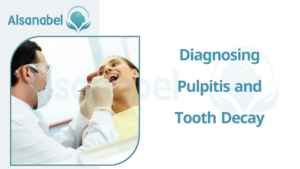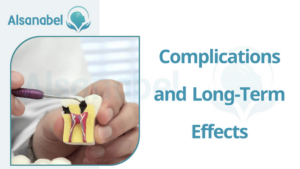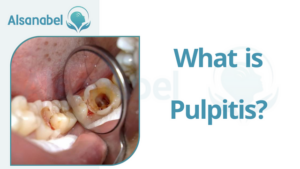Pulpitis and tooth decay are common dental problems that affect many people worldwide. Understanding the link between these two conditions is crucial for maintaining good oral health.
Pulpitis refers to inflammation of the dental pulp, which is the soft tissue inside the tooth. Tooth decay, on the other hand, is the result of bacteria breaking down the tooth’s outer surface, known as enamel, leading to the formation of cavities. This blog post will provide an explanation of pulpitis and tooth decay and emphasize the importance of understanding the link between these two conditions.
Importance of Understanding the Link between Pulpitis and Tooth Decay
Understanding the link between pulpitis and tooth decay is essential for several reasons. Firstly, tooth decay is one of the primary causes of pulpitis. When cavities develop and penetrate the enamel, bacteria can reach the dental pulp, leading to inflammation and infection. Without proper treatment, pulpitis can progress into a more severe condition called periapical abscess, which can result in tooth loss.
Secondly, addressing tooth decay early on can prevent pulpitis from occurring. Regular dental check-ups and proper oral hygiene practices such as brushing twice a day and flossing can help identify and treat tooth decay before it reaches the dental pulp.
What is Pulpitis?
Pulpitis is a dental condition characterized by inflammation of the dental pulp, which is the soft tissue inside the tooth. It can be caused by various factors, including tooth decay, trauma, gum disease, or even dental procedures like fillings or crowns that may irritate the pulp. This inflammation can lead to severe pain and discomfort, making it essential to understand its causes and symptoms.
Pulpitis occurs when the dental pulp becomes inflamed or irritated. The dental pulp contains nerves, blood vessels, and connective tissues that play a vital role in the tooth’s vitality and sensitivity. When bacteria penetrate the tooth’s outer surface (enamel) through cavities or cracks, it can reach the pulp, causing infection and inflammation. Other causes of pulpitis include trauma to the tooth, as seen in accidents or sports injuries, or even excessive dental procedures that remove too much tooth structure.
Signs and Symptoms of Pulpitis
One of the primary signs of pulpitis is persistent toothache or sharp, shooting pain that worsens with temperature changes or biting pressure. Sensitivity to hot or cold foods and drinks is also common. The tooth may become more sensitive to touch or tapping, and the surrounding gums may appear swollen or tender. In some cases, dental abscess or swelling may occur if the infection spreads beyond the pulp.
It is crucial to seek dental care promptly if these signs and symptoms are present, as untreated pulpitis can lead to more severe complications, such as periapical abscess or tooth loss. A thorough examination by a dentist, including X-rays and pulp vitality tests, can help diagnose and plan suitable treatment for pulpitis.
By understanding the causes and recognizing the signs and symptoms of pulpitis, individuals can take proactive steps to protect their dental health. Regular dental check-ups, maintaining good oral hygiene practices, and seeking early treatment for tooth decay are essential in preventing and managing pulpitis effectively.
What is Tooth Decay?
Tooth decay, also known as dental caries or cavities, is a common dental issue caused by the breakdown of tooth structure. It occurs when bacteria in the mouth produce acids that attack the tooth’s outer layer, known as enamel. This acid erosion weakens the tooth and creates openings or holes, where further decay can develop.
The main culprits behind tooth decay are poor oral hygiene and a diet high in sugary foods and drinks. When individuals fail to brush and floss regularly, plaque builds up on the teeth, providing a breeding ground for bacteria. These bacteria metabolize the sugars from food and beverages, producing acids that gradually erode the enamel.
Other contributing factors to tooth decay include dry mouth, which reduces saliva production and affects the mouth’s natural defense against acid attacks. Additionally, certain medications, such as antihistamines or antidepressants, can cause dry mouth. Furthermore, genetic factors, age, and underlying health conditions can also increase the risk of developing tooth decay.
Stages and Progression of Tooth Decay
Tooth decay progresses through different stages, starting with the initial demineralization of the enamel. At this stage, the affected area appears as a white spot on the tooth surface and is still reversible with proper oral hygiene and fluoride treatments.
If left untreated, the decay advances to the next stage, undermining the enamel and reaching the softer dentin layer. This leads to the formation of a cavity, which may present as a brown or black spot on the tooth. Eventually, the decay can penetrate the dentin and reach the dental pulp, causing pain and inflammation (pulpitis).
If allowed to progress further, tooth decay can result in the formation of an abscess, which is a pocket of pus caused by a bacterial infection. This can lead to severe pain, swelling, and even tooth loss if not treated promptly.
It is crucial to prevent tooth decay by adopting a proper oral care routine, including brushing at least twice a day, flossing daily, and visiting the dentist regularly for check-ups and cleanings. Limiting sugary foods and drinks, using fluoride toothpaste, and considering dental sealants can also help protect against tooth decay. Early detection and treatment are the keys to preventing further damage and preserving oral health.
The Connection between Pulpitis and Tooth Decay
Pulpitis is a condition that occurs when the dental pulp, the innermost layer of the tooth containing blood vessels and nerves, becomes inflamed. This inflammation is often a result of untreated tooth decay that has progressed to the point where it penetrates the dentin and reaches the dental pulp.
Tooth decay begins as the bacteria in the mouth produce acids that attack the tooth’s enamel, leading to the formation of cavities. If these cavities are not treated, the decay can continue to progress, eventually reaching the dental pulp. Once the bacteria reach the pulp, they can cause inflammation, leading to pulpitis.
Common Risk Factors for Both Conditions
There are several common risk factors for both tooth decay and pulpitis. These include:
- Poor oral hygiene: Failing to brush and floss regularly allows plaque to build up on the teeth, providing a breeding ground for bacteria. This increases the risk of both tooth decay and pulpitis.
- High sugar diet: Consuming sugary foods and drinks feeds the bacteria in the mouth, leading to acid production and tooth decay. The progression of tooth decay can eventually reach the dental pulp and cause pulpitis.
- Dry mouth: Reduced saliva production can contribute to tooth decay and pulpitis. Saliva helps neutralize acids in the mouth and washes away food particles and bacteria. Certain medications and underlying health conditions can cause dry mouth.
- Genetic factors: Some individuals may be more genetically predisposed to tooth decay and pulpitis. Genetics can influence the strength and composition of tooth enamel, making it more susceptible to decay.
- Age: As individuals age, their teeth may become more vulnerable to tooth decay and pulpitis. The wear and tear on the teeth over time can weaken the enamel, making it easier for bacteria to penetrate and cause decay.
By understanding the connection between tooth decay and pulpitis and recognizing the common risk factors, individuals can take steps towards maintaining good oral hygiene, adopting a healthy diet, avoiding dry mouth, and seeking proper dental care. Early detection and treatment of tooth decay can prevent the progression to pulpitis and preserve oral health.
Diagnosing Pulpitis and Tooth Decay

Clinical Examination and Dental Imaging
To diagnose pulpitis and tooth decay, a dentist will conduct a thorough clinical examination and may also use dental imaging techniques. During the examination, the dentist will visually inspect the teeth and gums for signs of decay, such as cavities or discoloration. They will also check for symptoms of pulpitis, including tooth sensitivity or pain.
Dental imaging, such as X-rays or cone beam computed tomography (CBCT), can provide a more detailed view of the teeth and surrounding structures. These images can help the dentist identify areas of tooth decay that may not be visible to the naked eye. They can also help determine the extent of the decay and whether it has reached the dental pulp.
Tests and Procedures to Confirm Diagnosis
In some cases, additional tests or procedures may be necessary to confirm the diagnosis of pulpitis and tooth decay. These may include:
- Pulp vitality testing: This involves testing the response of the dental pulp to stimuli, such as temperature or electrical impulses. A lack of response may indicate pulpitis.
- Transillumination: This technique uses a light source to examine the teeth and detect cavities or cracks that may not be visible on the surface.
- Biopsy: In rare cases, if there are any suspicious lesions or growths on the pulp or surrounding tissues, a biopsy may be performed to rule out other potential conditions.
Early diagnosis and treatment are crucial in preventing the progression of tooth decay to pulpitis. Regular dental check-ups and maintaining good oral hygiene practices, such as brushing and flossing regularly, can help detect and address dental issues before they become more severe. By prioritizing oral health, individuals can minimize the risk of developing pulpitis and tooth decay, preserving their overall oral well-being.
Treatment Options for Pulpitis and Tooth Decay
Non-Surgical Interventions
When treating pulpitis and tooth decay, the first line of treatment often involves non-surgical interventions. These options are typically used for early stages of decay or mild cases of pulpitis.
- Dental Fillings: Dental fillings are commonly used to treat cavities caused by tooth decay. During this procedure, the dentist removes the decayed portion of the tooth and fills the space with a durable material, such as composite resin or amalgam. This helps restore the structure and function of the affected tooth.
- Fluoride Treatment: In some cases, tooth decay may be in its early stages and can be reversed with fluoride treatment. Fluoride helps strengthen the tooth enamel and prevents further decay. The dentist may apply fluoride in the form of a gel, varnish, or mouth rinse, depending on the patient’s specific needs.
- Dental Sealants: Dental sealants are thin, protective coatings applied to the chewing surfaces of the back teeth to prevent tooth decay. The dentist applies a liquid resin to the grooves and pits of the teeth and then hardens it with a special light. This creates a barrier that helps prevent bacteria and food particles from getting trapped in the crevices, reducing the risk of decay.
Surgical Interventions and Root Canal Therapy
If the pulpitis or tooth decay has progressed to an advanced stage, more invasive treatments may be necessary. These options are often used when the dental pulp is infected or severely damaged.
- Root Canal Therapy: Root canal therapy, also known as endodontic treatment, involves removing the infected or damaged dental pulp from the tooth. After cleaning and disinfecting the tooth, the dentist fills the root canal system with a biocompatible material and seals it with a dental filling or crown. This procedure helps save the tooth and alleviate pain caused by pulpitis.
- Dental Crowns: Dental crowns are used to restore and protect teeth that have undergone root canal therapy or have extensive decay. A crown is a custom-made cap that covers the entire visible portion of the tooth. It provides durability, strength, and aesthetics, allowing the tooth to function properly.
- Tooth Extraction: In severe cases where the tooth cannot be saved, extraction may be necessary. The dentist will carefully remove the affected tooth and discuss replacement options, such as dental implants, bridges, or dentures.
It is important to consult with a dentist to determine the most appropriate treatment plan for pulpitis and tooth decay. Early intervention and regular dental care are key in preventing complications and preserving oral health. Individuals should maintain good oral hygiene practices and visit their dentist regularly to address any dental issues promptly.
Prevention and Oral Hygiene Practices
To prevent pulpitis and tooth decay, it is important to maintain good oral hygiene practices. Here are some recommended practices:
- Brushing: Brush your teeth at least twice a day using a soft-bristled toothbrush and fluoride toothpaste. Make sure to clean all surfaces of your teeth and gently brush along the gumline.
- Flossing: Flossing helps remove food particles and plaque from between your teeth and along the gumline. Use dental floss or interdental cleaners daily to keep these areas clean.
- Mouthwash: Rinse your mouth with an antimicrobial mouthwash after brushing and flossing. This can help kill bacteria and freshen your breath.
- Regular Dental Check-ups: Visit your dentist regularly for check-ups and professional cleanings. Your dentist can detect early signs of pulpitis and tooth decay and provide appropriate treatments.
Tips for Preventing Pulpitis and Tooth Decay
In addition to practicing good oral hygiene, here are some tips to help prevent pulpitis and tooth decay:
- Limit Sugary Foods and Drinks: Sugary foods and drinks can contribute to tooth decay. Limit your consumption of sugary snacks, sodas, and candies. Opt for healthier choices like fruits, vegetables, and water instead.
- Dental Sealants: Consider getting dental sealants, especially for children. Sealants provide an extra layer of protection for the back teeth, which are more prone to decay.
- Use Fluoridated Products: Choose toothpaste and mouthwash that contain fluoride. Fluoride helps strengthen tooth enamel and prevent tooth decay.
- Wear a Mouthguard: If you participate in sports or activities that may cause trauma to your teeth, wear a mouthguard to protect against injuries that can lead to pulpitis.
- Quit Smoking: Smoking and tobacco use can increase the risk of gum disease and tooth decay. Quitting smoking can significantly improve your oral health.
By following these recommended oral hygiene practices and preventive tips, you can reduce the risk of pulpitis and tooth decay. Remember, early intervention and regular dental care are essential in maintaining optimal oral health. Consult with your dentist for personalized advice and treatment options.
Complications and Long-Term Effects

Possible Complications of Untreated Pulpitis and Tooth Decay
Untreated pulpitis and tooth decay can lead to several complications, including:
- Abscess formation: If the infection from pulpitis spreads, it can result in an abscess, which is a pocket of pus that forms at the root of the tooth.
- Tooth loss: Severe tooth decay and pulpitis can eventually lead to tooth loss if not treated promptly. The decay can weaken the tooth structure, causing it to become loose.
- Spread of infection: If the infection is left untreated, it can spread to the surrounding tissues and even to other parts of the body, leading to more serious health problems.
- Chronic pain: Pulpitis can cause persistent toothache, which can significantly impact a person’s quality of life. The pain may radiate to the jaw, head, and neck, making it difficult to eat, sleep, or concentrate.
Long-Term Impact on Oral Health and Overall Well-being
The long-term effects of untreated pulpitis and tooth decay can have a significant impact on oral health and overall well-being. Some of these effects include:
- Tooth loss and functional limitations: Untreated tooth decay can result in the loss of teeth, leading to difficulties in chewing, speaking, and proper digestion of food. This can affect one’s nutrition and overall health.
- Gum disease: Prolonged inflammation from untreated pulpitis can increase the risk of gum disease. Gum disease, also known as periodontal disease, can cause gum recession, bone loss, and even tooth loss.
- Aesthetic concerns: Tooth decay can cause tooth discoloration, cavities, and even tooth fractures. These aesthetic concerns can impact one’s self-confidence and social interactions.
- Systemic health implications: Poor oral health has been linked to an increased risk of various systemic conditions such as cardiovascular disease, diabetes, respiratory infections, and premature birth in pregnant individuals.
Importance of Prompt Diagnosis and Treatment
It is crucial to address pulpitis and tooth decay promptly to avoid these complications and maintain good oral health. Regular dental check-ups are essential for early detection and diagnosis of dental issues. Dentists can provide personalized advice and treatment options to prevent the progression of pulpitis and tooth decay.
Proper oral hygiene practices, such as brushing twice a day, flossing, and using antibacterial mouthwash, can also help prevent the development of dental issues. In cases of advanced pulpitis or tooth decay, prompt treatment, such as root canal therapy or tooth extraction, may be necessary to alleviate pain, remove infection, and prevent further complications.
By recognizing the link between pulpitis and tooth decay, individuals can take proactive steps to prevent these conditions from progressing and causing long-term effects on oral health and overall well-being. Maintaining good oral hygiene, seeking regular dental care, and promptly addressing any dental issues are key to ensuring optimal oral health and overall well-being. Consulting with a dentist is highly recommended for personalized guidance and treatment options tailored to individual needs.

